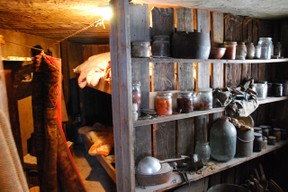 I am a historian. It's very safe for you to assume that I've visited plenty of museums in my time. I will categorically state that this was the best of them all.
I am a historian. It's very safe for you to assume that I've visited plenty of museums in my time. I will categorically state that this was the best of them all.
It had everything. Exhibits of original artifacts; information displayed on the walls; computerized screens to delve further into facets that caught your eye; video footage; reconstructed scenes in rooms; audio testimony; interactive elements too.
Your journey through the Oskar Schindler Factory begins with a huge room, all about Krakow on the eve of World War II. You see a refined city, where an elegant, multicultural population exist peacefully side by side.
This had once been Poland's capital city. Its monarchs and saints were buried in the cathedral on the hill. Krakow was a place where the intelligentsia gathered, many of them attending one of the oldest universities in Europe.
Then Germany invaded.
Polish men and women flocked to enlist, in order to defend their city as soldiers. The English bombed ancient buildings. Nazi Occupation began in force. Dissenters were arrested, executed or disappeared. Jews were stripped of rights, homes and property, herded into the Ghetto and concentration camps, then taken for extermination. And finally the Red Army appeared on the horizon. Poland, and Krakow with it, was now a Communist state.
There is an epic tale to tell in Krakow's Museum of Wartime.
Inside the Oskar Schindler Factory, each new room or corridor has something new to fascinate and inform. The museum doesn't set out merely to explain what happened. It wants to take you there.
Even now I still get goosebumps, remembering how I wandered down a staircase to encounter a black door locked at its foot. A sturdy door, lined with bolts, and too thick to easily break down. The whispers and sobs from within. A man's agonized moan. A women's hushed, urgent voice repeating words in a cadence that could only have been a prayer. And a peep-hole that I feared to look through.
The Wartime Museum of Krakow is designed to bring moments of history to life, and it fully succeeds at that. Visit it, and give yourself three or four hours to fully explore its mysteries and treasures. You will not be disappointed.


















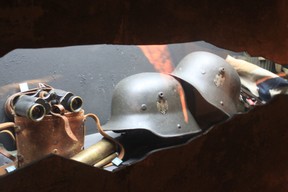 My friend and I were quite unsure what to expect within the former premises of the enamelware factory.
My friend and I were quite unsure what to expect within the former premises of the enamelware factory.
 I am a historian. It's very safe for you to assume that I've visited plenty of museums in my time. I will categorically state that this was the best of them all.
I am a historian. It's very safe for you to assume that I've visited plenty of museums in my time. I will categorically state that this was the best of them all.









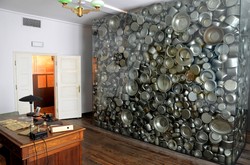

 St Tydecho's Churches in West Waleson 09/03/2014
St Tydecho's Churches in West Waleson 09/03/2014
 Goodies for an Outlander Premiere Partyon 03/06/2015
Goodies for an Outlander Premiere Partyon 03/06/2015
 Holocaust Memorial Day Interview with Rainer Höss, Grandson of Rudolf Architect of Auschwitzon 01/24/2015
Holocaust Memorial Day Interview with Rainer Höss, Grandson of Rudolf Architect of Auschwitzon 01/24/2015
 Romantic Valentine Gifts for an Outlander Fanon 01/16/2015
Romantic Valentine Gifts for an Outlander Fanon 01/16/2015

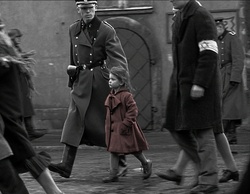
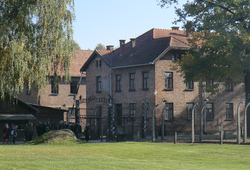
Comments
Brooke - Oh! It must have looked very different to you, than it was to me. I'm imagining the rooms quite bare when you were there.
cmoneyspinner - Yes, Oskar Schindler was just a man. Which shows that all of us have the capacity to do amazing things with our lives.
So you're saying Schindler is just like everybody else!
A sinner who can become convicted in their heart and mind of their own guilt, repent of wrongdoing, switch gears and go off in an entirely different direction for their life, and drastically impact the lives of others for the good all of mankind.
OK. I get that!
"If we say we have no sin, we deceive ourselves and the truth is not in us." (1 John)
No, I don't think it was there. We did the factory and other locations from the movie, as well as Auschwitz and Dachau (I think). Will definitely get there again when my girls are old enough to appreciate it!
I totally agree with all that you've said. It's thrilling, moving and thought-provoking, often in equal measure. Though I admit that I shed a few tears over in the Ghetto.
Was the Museum of Wartime there, when you visited the Oskar Schinder Factory? I was led to believe that it's quite a recent installment. If not, then I recommend visiting again.
I visited Krakow about eight years ago and it was the most amazing city. Historic, romantic, safe, colourful. We visited Schindler's factory and office and it was a moment I will not soon forget--walking up those steps that are shown in the movie, looking out his office window, wondering what he felt when he sat there, wondering if he knew how many lives he was saving and how important his actions would still be in years to come. Seeing the remnants of ghettos walls left since the war, hearing stories of lives lost and lives saved--put Krakow on the top of your "must see" places.
It would be the whole gauntlet of emotions. Remember that I'm just focusing on the historical stuff, because I'm me. I'd definitely volunteer to travel over there with you, if you needed someone to go with.
All of these articles have made me really, really want to visit Poland, and it's never been huge on my list of place I have to visit, but it is now. I feel like it'd be a tad solemn, but still amazing trip.